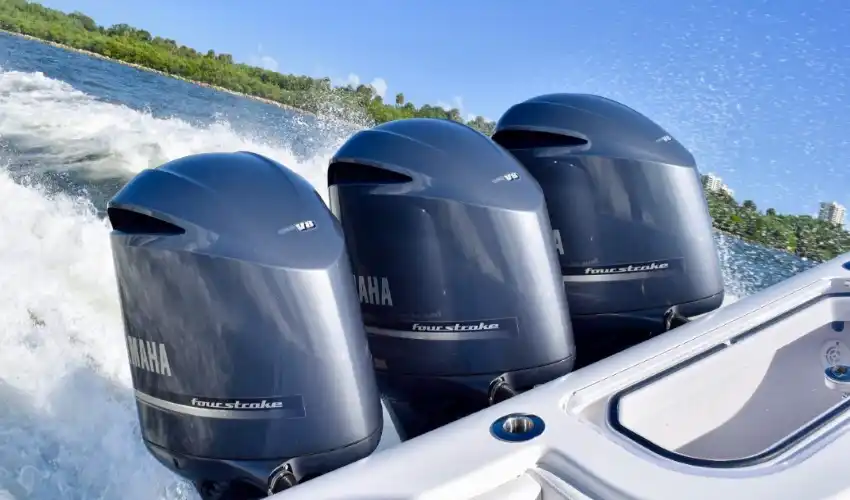Purchasing an outboard motor can be an exciting yet overwhelming experience, especially if you’re new to boating or upgrading your existing setup. Outboard motors power your boat, affect its performance, and can significantly impact your time on the water. Making the wrong choice can lead to costly repairs, poor performance, and even safety issues. To help you make an informed decision, here are some common outboard motor buying mistakes to avoid.
1. Not Considering the Right Motor Size
One of the biggest mistakes buyers make is choosing an outboard motors for sale that doesn’t match their boat’s size and weight. An underpowered motor will struggle to propel the boat efficiently, leading to slow speeds and poor handling. Conversely, an oversized motor can be unnecessarily heavy and consume excessive fuel, reducing your boat’s stability and increasing costs.
Always check your boat manufacturer’s recommendations for the maximum horsepower and ensure your new motor fits within those limits. Matching motor size to your boat’s specifications is key for optimal performance and safety.
2. Ignoring Fuel Type and Efficiency
Outboard motors come in various fuel types, including two-stroke, four-stroke, and even electric models. Each type has different fuel efficiency, maintenance needs, and environmental impacts. Two-stroke engines tend to be lighter and more powerful but are less fuel-efficient and produce more emissions. Four-stroke engines are quieter, cleaner, and more fuel-efficient but may be heavier and pricier.
Ignoring fuel efficiency can lead to higher running costs over time. Consider how often and how far you plan to boat, and choose a motor with a fuel type that suits your needs and budget.
3. Overlooking Maintenance Requirements
Every outboard motor requires regular maintenance to keep it running smoothly. Some engines are more maintenance-intensive than others. For example, two-stroke engines often require more frequent servicing and oil changes than four-stroke engines.
Before purchasing, research the maintenance schedule and costs associated with the motor. Neglecting maintenance needs can cause premature engine failure and expensive repairs down the line.
4. Skipping the Test Run
Buying an outboard motor without testing it on the water is a risky move. A test run helps you assess the motor’s performance, noise levels, and handling. It also reveals any mechanical issues, unusual vibrations, or overheating problems.
If buying from a dealer or private seller, always ask for a demonstration or trial run before finalizing the purchase. This step can save you from unpleasant surprises after the sale.
5. Not Considering Warranty and Support
Outboard motors are significant investments, and having reliable warranty coverage is essential. Some manufacturers offer limited warranties that cover parts and labor for a specific period, while others provide extended coverage options.
Additionally, consider the availability of service centers and parts in your area. Buying a motor with good warranty terms and local support ensures peace of mind and easier repairs if needed.
6. Neglecting Compatibility with Controls and Accessories
Modern boats come with different throttle and shift controls, electrical systems, and accessories like gauges and steering systems. Not all outboard motors are compatible with every control setup or accessory.
Before purchasing, verify that the motor can integrate seamlessly with your boat’s existing controls. Compatibility issues can lead to costly modifications or reduced functionality.
7. Focusing Solely on Price
While budget is an important factor, choosing the cheapest outboard motor can be a costly mistake. Low-priced motors may have lower build quality, poorer performance, and shorter lifespans. These can result in frequent repairs and replacements, increasing overall ownership costs.
Instead of focusing only on price, consider the motor’s reliability, fuel efficiency, warranty, and brand reputation. Investing in a high-quality motor upfront can save money and hassle in the long run.
8. Forgetting to Factor in Weight
Outboard motors vary significantly in weight. A motor that’s too heavy for your boat can affect its balance and handling, making it unsafe to operate. On the other hand, a motor that’s too light might not provide the necessary thrust.
Make sure to check the motor’s weight and confirm that your boat’s transom can support it. This will help maintain stability and safe performance.
9. Ignoring Environmental Regulations
Certain locations have strict environmental regulations regarding emissions and noise pollution. Some older two-stroke engines may not comply with these rules, restricting where you can use your boat.
Check local and regional regulations before buying an outboard motor to ensure compliance. Choosing a more environmentally friendly motor, such as a modern four-stroke or electric model, may be beneficial and future-proof.
10. Buying Without Researching Brands and Reviews
Not all outboard motors are created equal. Brand reputation and user reviews can provide valuable insights into engine performance, reliability, and customer support.
Take the time to read expert reviews, ask boating communities for recommendations, and compare different brands. This research can help you avoid low-quality products and choose a motor that suits your needs.
Final Thoughts
Buying an outboard motor is a significant decision that requires careful consideration. Avoiding these common mistakes—such as ignoring motor size, fuel efficiency, maintenance, and compatibility—can help you make a smart purchase that enhances your boating experience. With the right motor, you’ll enjoy reliable performance, better fuel economy, and many memorable trips on the water.
Take your time, do your homework, and consult with experts or dealers before committing. Your boat and your safety depend on it.
